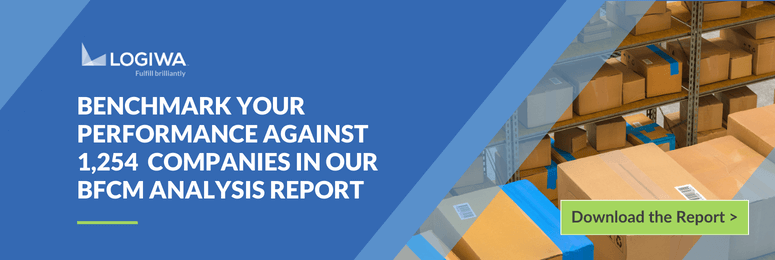Get ready to explore the world of apparel inventory management as this guide presents you with key strategies, potential challenges, and the importance of having a robust system in place. Learn how to navigate through the unique needs of fashion inventory, the impact of effective management on customer satisfaction, and how technology can streamline your operations.
Key Takeaways:
- Apparel inventory management is critical to prevent stock-outs, maintain low carrying costs, and satisfy investor expectations for efficient operations.
- There are several methods for managing fashion inventory, including the traditional pen-and-paper method, spreadsheet method, mobile-based tools, and the use of an Enterprise Resource Planning (ERP) Tool with a Warehouse Management System (WMS) Integration.
- Fast-changing trends in the fashion industry pose a challenge to demand planning and inventory management. Effective use of demand planning analytics tools and historical data can assist in making informed decisions.
- Channel segmentation, understanding the demand variation between physical locations and online store, can significantly improve fashion inventory management.
- Advanced clothing inventory management strategies are pivotal for fashion companies to meet the evolving consumer expectations and keep pace with the booming apparel sales.
Apparel inventory management is the unglamorous side of a glamorous industry.
When your business deals in trends, styles, and tastes, it’s important to be one step ahead of the demand curve. Of course, if it were that easy to predict what consumers wanted, everyone would mortgage their house and go into business. Rather, demand planning and proper apparel inventory management helps businesses stay one step ahead.
In the apparel industry, apparel inventory management has unique challenges. Sure, there are the traditional inventory management best practices that must be followed. But there are also strategies unique to apparel inventory management that fashion retailers must consider. They’ll need to quickly unload items that are dipping in popularity and be ready to rapidly order next season’s (or next month’s!) trendiest items.
In this guide, we’ll help you understand:
BONUS: Before you read further, download our Warehouse Management Guide Whitepaper to see how Logiwa uses real-time inventory tracking to help customers get up to 100% inventory accuracy and increase shipments by 2.5x.
Why Does Apparel Inventory Management Matter?
Good fashion inventory management is important for three key reasons:
- It avoids stock outs and increases customer satisfaction
- It keeps carrying costs low and prevents retailers from tying up vital capital in things like storage space and insurance
- Investors increasingly look at a company’s inventory to assess its health
Preventing Stock-Outs and Increasing Customer Satisfaction
Stock-outs can negatively impact a customer’s short-term and long-term behavior towards a brand. In the short term, retailers lose out on a purchase and there’s very little chance that a consumer will wait around for the item to come back in stock. More likely, they will look to another retailer to fulfill their need, especially in the context of online shopping.
Over the long term, stock-outs erode customer trust. If customers can’t rely on you to have the on-trend items you market in stock, they will stop visiting your virtual or physical storefront and turn to more reliable vendors.
Keeping Carrying Costs Low
Clothing inventory management costs money. While holding inventory is an inescapable part of doing business, holding too much inventory can be a weight around your business’s neck. Healthy businesses maintain a healthy cash flow, and they can’t do this if money is tied up in things like additional labor hours for managing inventory, additional space for storing inventory, or higher insurance costs.
On top of that, too much inventory means there’s the chance of loss due to damage, lost items, or theft.
Keeping Investors Happy
Investors look at a company’s inventory to assess its health. Inventory ratios over time indicate how well an organization moves from production to fulfillment of customer orders. While investors may use different methodologies to assess a company’s inventory, they are seeking the same answers to questions like:
- Does this company operate in an efficient manner when it comes to production and sales?
- Is this company using any “creative” (read: less-than-ideal or even fraudulent) accounting to hide poor performance?
For both internal employees and external stakeholders, effective inventory management is an essential component of running an apparel business.
Strategies for Fashion Inventory Management
There are several approaches retailers can take when tackling apparel inventory:
Paper Method
Small retailers may make a list of their items and take a count by hand. This may include dividing up a sheet into several categories and then adding subcategories for different styles. For instance, one category may be “wrap dress” while the different subcategories range from sizes to colors.
This method’s advantage is that it’s inexpensive and easy to implement for small, boutique shops. The downside is that as your business grows, this inventory management method doesn’t scale up. It’s also more prone to human error, no matter your size.
Spreadsheet Method
The spreadsheet method involves using Microsoft Excel or Google Sheets to keep track of your inventory. Counters manually tally items using pen and paper and then enter the information in the master spreadsheet.
Using a spreadsheet is a step up for smaller businesses because it makes it easier to store information, add new categories and subcategories by simply inserting columns and rows, and conduct some basic data analysis using the spreadsheets features. It’s also easier for retailers to access their inventory management info on the go if they’re using a cloud-based tool like Google Sheets.
On the other hand, this method is just as prone to error as the pen-and-paper method, if not more so. There’s a chance for counting errors during the count and when the information is being manually entered into the spreadsheet.
Plus, if you aren’t using a tool like Google Sheets, there’s the chance of multiple file versions floating around, which means your clothing inventory management system doesn’t have a single source of truth or master data set.
Mobile-Based Apparel Inventory Management Tools
If you’re concerned about counting errors using the pen-and-paper method, consider employing inventory counting apps. The most basic versions allow you to take a picture of an item, enter notes about it, and then upload the photo and information to the cloud. More sophisticated iterations allow you to scan items using a SKU barcode and the information will be instantly uploaded to your system. Once the count’s complete, you can download the inventory data in .CSV format.
Using mobile scanners is a great approach since it eliminates manual data entry, which is often prone to errors. Moreover, it makes counts instantly available via the cloud. Depending on the sophistication of the app, this information is either available via a downloadable file or through data visualizations.
Enterprise Resource Planning (ERP) Tool with a Warehouse Management System (WMS) Integration
For larger apparel companies, an enterprise resource planning (ERP) tool with a warehouse management system (WMS) integration is the way to go. An ERP integrates all back office functions together to create a master data environment and enables optimization through automation. This means that the inventory management system speaks to the order management system, and this, in turn, speaks to the WMS.
The WMS automates processes within the warehouse to ensure there is proper oversight on goods from the moment they enter the warehouse (receiving) to the moment they leave the warehouse (shipping). The warehouse inventory software manages tasks like pick path optimization, dock scheduling, and cross docking.
For large retailers, clothing inventory management calls for such a system. Big brands facilitate orders from several channels including online, social media, apps, and in-store. On top of new orders, they have to process order returns either by mail or through stores. Complicating all of these activities are consumer expectations for delivery times that grow higher and higher every year.
An ERP that includes a strong system makes apparel inventory management easy for omni-channel brands. When an order comes in, the order fulfillment system processes it, and the inventory system is subsequently updated. These systems typically rely on scannable barcodes, or even RFID tags.
Small- to mid-sized retailers should consider the ROI of an integrated system, even on a smaller scale. For instance, a system with point-of-sale (POS) integration is an excellent way for retailers to keep their inventory accurate.
With POS integration, whenever a customer makes a purchase, the system is automatically updated, improving count accuracy. This also allows managers to cut down on the number of physical inventory counts, since they have regularly updated numbers to reference.
Don’t Let Your Inventory Become a Liability: Poor inventory accuracy leads to a host of issues that cut into your margins. Learn how Logiwa integrates all your sales channels and provides real-time inventory tracking.
The Challenges Of Fashion Inventory Management
There are a number of characteristics of the apparel industry that can complicate retailers’ clothing inventory management efforts. Retailers should pay close attention to these trends, assess how heavily they impact their businesses, and plan accordingly.
Apparel: One Of The Largest Ecommerce Categories
Depending on who you speak to, apparel is either the largest ecommerce category or the second largest, after consumer electronics. In any case, it’s big. One report states that ecommerce sales take up more than a third of all apparel sales. Such a big industry presents a huge opportunity for retailers who do it right.
It goes without saying that customers expect to shop for clothes online. Not to mention, they want to receive those clothes within a matter of days and they want to return those items to a store, if needed.
As a result, retailers need integrated apparel inventory management systems that provides an uninterrupted customer experience and also supplies real-time stock information.
It also means that online catalogs must be properly integrated with the system. Consumers want up-to-date information on the availability of different items, styles, colors, and sizes.
But, it’s not just about your customers! You also need real-time information about what’s selling (and what isn’t selling) through your various online channels. For instance, a deep dive on your online sales data can give you a granular understanding of your business. If a specific t-shirt is flying off the virtual shelves, it’s easy to simply order more at the next re-order point.
However, a close look at the data may reveal that it’s only the green and purple shirts that are selling out. As a result, you can make an informed decision and only order the popular colors and allocate the leftover money elsewhere.
An integrated system also ensures there aren’t any stock-outs. For example, if your online point-of-sale system or payment gateway doesn’t sync with your system, customers expecting an omni-channel sales experience will be displeased when items that are available on one channel are out of stock on another.
As you can see, to be successful in the apparel ecommerce environment, your inventory management needs to be more than manual stock counting.
Fast-Changing Trends Complicate Demand Planning
Forecasting demand is a critical component of inventory management, especially apparel inventory management. Fashion is a business defined by trends, and this is very true for fast fashion retailers like H&M or Zara.
Apparel companies that want to stay ahead invest in demand planning analytics tools that scan the market to predict consumer demand based on trends and what influencers are promoting. They can also use historical data to plan successful launches. Using data analytics enables executive buyers to put their money in the right products and to stay away from unwanted or obsolete inventory.
It’s this intense focus on data that initially fueled Zara’s growth. Back in 2001, the media reported on the retail giant’s brilliant execution of “just-in-time low-cost fashion.” The company produces most of its own products, allowing it to rapidly respond to trends in the fashion and music industries and get stock on shelves quickly. By producing what consumers want and selling those items quickly, they limit the amount of inventory.
Today, this nimble strategy must be applied in the high-speed world of online shopping. It’s why retailers like H&M are turning to big data to give consumers what they want. Traditionally, H&M has focused on stocking its thousands of stores around the world with the same merchandise. Now, it’s using big data to customize its offerings at every store to provide experiences tailored to meet geographical trends.
Getting consumer demand right is do or die. As one portfolio manager told the Wall Street Journal, “You are much more vulnerable today if you don’t have the right product at the right price because I can search the world for the right product.”
It’s no wonder that H&M is taking drastic action on its ecommerce business. The company is struggling with lagging sales due, in part, to obsolete inventory. In fact, the multinational retailer recently struggled with so much excess inventory that it started shipping off defective items to be burned at a power plant in Sweden.
Channel-Specific Trends Can Make or Break Apparel Inventory Management
When retailers think of micro-segmentation, they often think about breaking down items based on their specific attributes like their style, material, color, or size. But there’s also another useful segmentation strategy that can help apparel retailers with their inventory management: channel segmentation.
If you’re running an omni-channel brand, and you’ve got several brick-and-mortar locations as well as an online store, there’s an opportunity to further optimize your fashion inventory management. In some cases, you can even move inventory you originally dismissed as obsolete.
For example, understand which items, in which iterations, sell out per sales channel. If you notice that a specific garment is more popular in your physical locations, consider allocating more of those items to the store floor. Even among your physical locations, there may be variations between different geographies. Perhaps your downtown location sells out of one item faster than your suburban location. Analyzing your data in a granular fashion allows you to more effectively allocate inventory.
Effective Clothing Inventory Management Keeps Retailers Thriving in a Fast-Moving Industry
Apparel sales may be booming, but that doesn’t mean it’s easy business. With evolving consumer expectations and an ever-expanding ecommerce marketplace, fashion companies will rely on advanced clothing inventory management strategies to meet demand while keeping stock levels reasonable.
Schedule your Logiwa demo today to see what the industry’s most integrated warehouse management system can do for your fashion business.
FAQs
What is apparel inventory management and how can Logiwa help?
Apparel inventory management is an integral aspect of fashion retail businesses. It involves overseeing stock levels, tracking orders, and managing SKU variety. Logiwa’s Warehouse Management System (WMS) helps to automate and streamline these processes for enhanced efficiency and accuracy.
Why is apparel inventory management important in the fashion industry?
Apparel inventory management helps avoid stockouts, increases customer satisfaction, reduces carrying costs, and appeases investors by showcasing effective business operations. With Logiwa’s WMS, retailers can manage inventory in real-time and optimize operations to meet these critical objectives.
How can Logiwa’s solutions help prevent stockouts and improve customer satisfaction in fashion retail?
By offering real-time inventory tracking and efficient order processing, Logiwa helps fashion retailers avoid stockouts, ensuring items customers want are always available. This enhances customer satisfaction and loyalty to your brand.
How does Logiwa help in reducing the carrying costs in apparel inventory management?
Logiwa’s WMS helps fashion retailers optimize their inventory levels, reducing the carrying costs associated with excessive stock like storage, insurance, and potential loss. This ensures capital is not tied up unnecessarily and supports healthy cash flow.
How can Logiwa’s WMS software make investors happy?
Logiwa’s WMS provides real-time data and transparency into a company’s inventory and order management. This allows investors to accurately assess a company’s efficiency and performance, instilling confidence in the business operations.
What are some strategies for apparel inventory management, and how does Logiwa fit into these strategies?
Strategies range from manual methods, such as pen-and-paper or spreadsheets, to more sophisticated methods like using mobile-based inventory management tools or an integrated system like an ERP with WMS. Logiwa’s WMS can be integrated with multiple platforms, providing real-time inventory tracking, seamless order management, and comprehensive data analysis.
How does Logiwa’s WMS handle the challenges of fashion inventory management?
With the fast-changing trends and omni-channel sales platforms in the apparel industry, Logiwa’s WMS provides retailers with real-time inventory tracking, demand forecasting, and channel segmentation. This enables businesses to meet customer demand efficiently and manage their inventory effectively.
How does Logiwa support retailers dealing with channel-specific trends?
Logiwa’s WMS enables channel segmentation, allowing retailers to understand sales patterns across different sales platforms and locations. This granular understanding helps to allocate inventory more effectively, improving sales and reducing unnecessary stock.
How can Logiwa’s integrated WMS system help fashion businesses thrive in a fast-moving industry?
Logiwa’s WMS enables fashion businesses to adapt to evolving consumer expectations and the expanding ecommerce marketplace. With advanced features such as real-time inventory tracking, demand forecasting, and order management, Logiwa ensures businesses can meet demand efficiently while keeping stock levels optimal.
Scale up your high-volume fulfillment operations.
Logiwa is the leading cloud WMS and order fulfillment software for B2C and direct-to-consumer businesses
Inventory Management
Improve your inventory across your supply chain.






